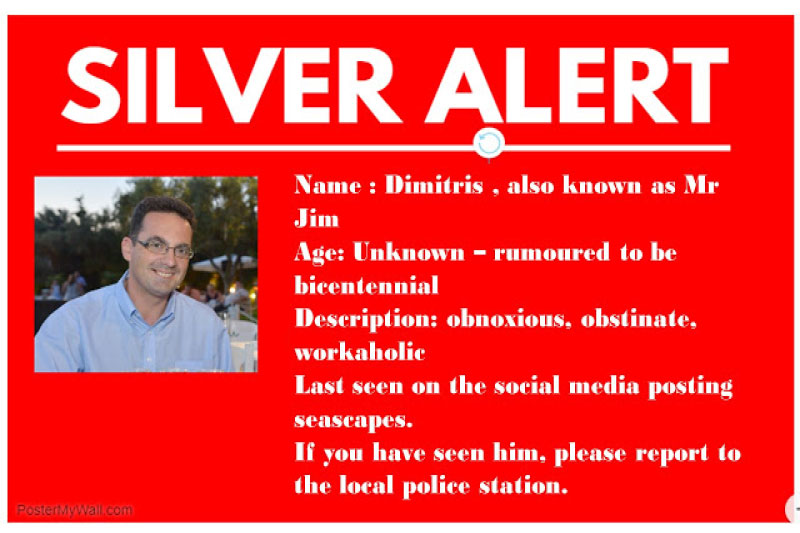Ever found yourself in a classroom full of bored teenagers who are sick and tired of lists of adjectives and allergic to passive voice? Learning technology and creativity might save the day…
This article features two activities that you can use with B1-C2 level classes to help them use productively adjectives, passive voice and summarize texts with a touch of creativity.
By Dimitris Primalis, Teacher, Teacher Trainer, Examiner
Amber or Silver alert

Aim: Recycle adjectives and descriptive vocabulary.
Teaching adjectives related to personality traits can often be boring. This is an activity aiming at helping learners to use these adjectives in a less conventional manner. All students are familiar with announcements on the media about missing people in which there is a description of the people who went missing. I showed the class the following digital poster:
Apparently, the tone is humorous but the students appreciated it as it was a welcome change to the class routine. I asked them to create a similar poster for a celebrity or for themselves. As a follow-up activity, you can ask them to present their poster in class and explain why they believe the missing person has the traits in the description part. Alternatively, learners can focus on physical description, depending on what vocabulary has been taught in class. I used PosterWall.com for this poster but it can be created easily with a Power Point slide saved in jpg form.
Create breaking fake news

Personal and impersonal structure in passive voice is often treated as the most boring task by the students. Grammar books often focus on form without context and students often come across examples like the following:
They believe that Mary is a student.
It is believed that Mary is a student.
Mary is believed to be a student.
https://www.fodey.com/generators/newspaper/snippet.asp or http://breakyourownnews.com/.
These are web 2.0 tools that allow you to create an electronic newspaper clip or a photo, respectively, which resembles the breaking news format of TV news bulletins. Try writing about something that is related to current affairs or has to do with the school’s context. I created fake news about a celebrity who was appointed Education secretary.
After having taught the structure and done some controlled practice activities, present the story and ask learners whether they believe it is true or not. Talk in class about fake news, whether they are negative or positive and what effects they have on people. Then ask them if they can create positive fake news.
For example:
Georgia is believed to have been nominated for this year’s Oscar academy awards. Ask them to work in pairs for a couple of minutes, write positive fake news about their partner and share it with them. They have to use passive voice and check with their partner for any corrections that need to be made. The most important rule of the activity is that students should not write offensive or negative stories about their peers. The headlines have to be positive. Once pairwork is over, ask the pairs to share their headlines with the rest of the class.
As follow-up activity, ask learners to produce a news podcast or video or a newspaper article based on the assumption they made on their peers’ success. Students enjoy it and are curious to listen to their peer’s positive projection about them.•
